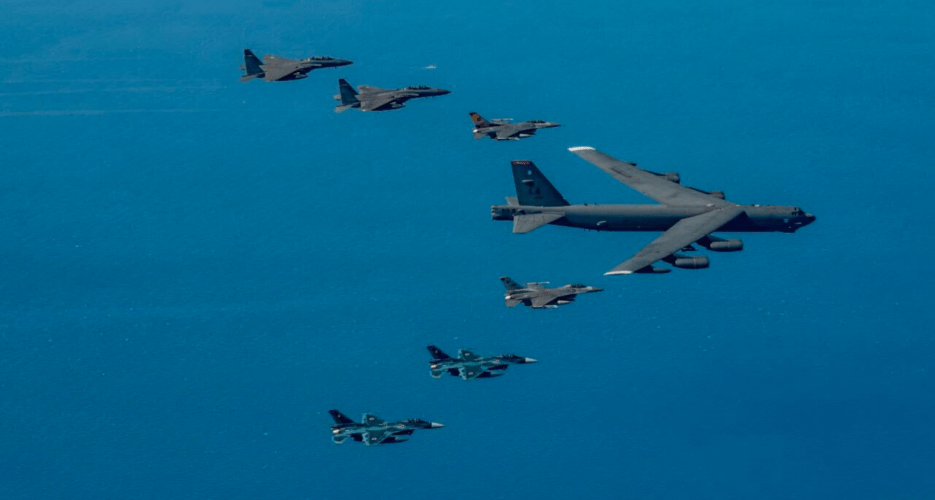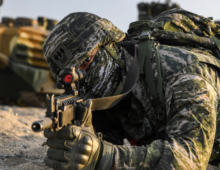Two American F-16s, an American B-52H, two South Korean F-15Ks and two 2 Japanese F-2s conduct their first joint air exercise in the overlapping Air Defense Identification Zone (ADIZ) of South Korea and Japan, south of the Korean Peninsula, Oct. 22, 2023 | Image: United States Air Force
The U.S., South Korea and Japan conducted their first joint air exercise near the Korean Peninsula on Sunday, involving a U.S. B-52H strategic bomber and fighter jets from each country. The exercise took place south of the peninsula, in South Korea and Japan's overlapping air defense zones. It’s part of the trilateral efforts agreed upon during the August Camp David summit to enhance defense capabilities against North Korea’s nuclear and missile threats, showcasing the cooperative stance among the nations involved.
This exercise follows the commitment made by U.S. President Joe Biden, South Korean President Yoon Suk-yeol and Japanese Prime Minister Fumio Kishida for regular, multi-domain trilateral drills. Despite North Korea’s criticism of these activities as provocations, the countries proceeded with their security commitments. The strategic deployment aligns with the U.S. promise to enhance the regular visibility of its strategic assets in the region amid continuing tensions with North Korea.
The U.S., South Korea and Japan conducted their first joint air exercise near the Korean Peninsula on Sunday, involving a U.S. B-52H strategic bomber and fighter jets from each country. The exercise took place south of the peninsula, in South Korea and Japan's overlapping air defense zones. It’s part of the trilateral efforts agreed upon during the August Camp David summit to enhance defense capabilities against North Korea’s nuclear and missile threats, showcasing the cooperative stance among the nations involved.
This exercise follows the commitment made by U.S. President Joe Biden, South Korean President Yoon Suk-yeol and Japanese Prime Minister Fumio Kishida for regular, multi-domain trilateral drills. Despite North Korea’s criticism of these activities as provocations, the countries proceeded with their security commitments. The strategic deployment aligns with the U.S. promise to enhance the regular visibility of its strategic assets in the region amid continuing tensions with North Korea.
Get your
KoreaPro
subscription today!
Unlock article access by becoming a KOREA PRO member today!
Unlock your access
to all our features.
Standard Annual plan includes:
-
Receive full archive access, full suite of newsletter products
-
Month in Review via email and the KOREA PRO website
-
Exclusive invites and priority access to member events
-
One year of access to NK News and NK News podcast
There are three plans available:
Lite, Standard and
Premium.
Explore which would be
the best one for you.
Explore membership options
© Korea Risk Group. All rights reserved.
No part of this content may be reproduced, distributed, or used for
commercial purposes without prior written permission from Korea Risk
Group.












